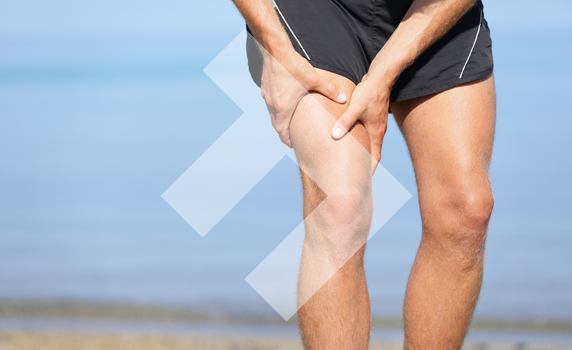While there are some injuries you’ve just got to admit you can’t fix yourself, there are plenty of little sports niggles and pains that can be treated by yourself with the correct equipment. Unfortunately, knowing the difference between a simple sprain and a broken bone that has swelling around it can sometimes be difficult.
With that in mind, it always pays to take a trip to the GP to get your injury diagnosed. If it’s something non-severe, here are some tips from Premier Healthcare for common injuries.
Sprains and Strains
Simple sprains and strains can be treated with the P.R.I.C.E method, otherwise known as protection, rest, recovery, ice and elevation. This method should be used immediately after injury and for at least 48 hours.
- Protection: protect the injured area with a bandage or support
- Rest: try and put as little strain as possible on the affected area, through both physical activity and daily life. For instance, consider using a walking stick or crutch to keep weight off a damaged leg.
- Ice: icing off an inflammation helps to reduce swelling and take the pain away. Apply an ice pack or ice wrapped in a towel to the area for 15-20 minutes. Take caution, however, as some injuries should be treat with heat rather than cold. Generally, ice should be used to reduce swelling and numb pain while heat is to ease stiffness.
- Compression: using compression bandages and tubular bandages, strap your injury up. This helps limit swelling.
- Elevation: When possible, keep the injury held aloft above your heart. For instance, place an injured ankle on a foot rest with stacks of newspapers underneath. This helps reduce swelling.
Dislocations
A dislocation occurs when two bones that come together are separated. Usually occurring at the shoulder, hip or knee, these are very painful events and a medical emergency. DO NOT attempt to pop the injured joint back into place as you may pinch a nerve or cause more damage. Instead, ensure a trained professional does it.
Afterwards, you can help alleviate pain and swelling with anti-inflammatories and rest.
Fractures/Breaks
Once diagnosed, you’ll most likely receive a cast for a break. Unfortunately, you’ll still feel pain and irritation as the bone mends. You should take anti-inflammatory medication/painkillers such as ibuprofen to help prevent swelling inside of the dressing.
Kinesology Tape
A more recent phenomena, kinesiology tape is all the rage at the moment in sports. For good reason, as the tape helps reduce swelling and bruising by lifting the skin away from swollen tissue below. The elasticated nature of the tape creates a sub-dermal vacuum that increases the efficiency of your lymphatic and venous drainage systems. This is handy for painful bruising and swelling and can be used as part of the P.R.I.C.E process.
![]()
 Instagram
Instagram Pinterest
Pinterest Facebook
Facebook Twitter
Twitter YouTube
YouTube




 Paul
Paul 



